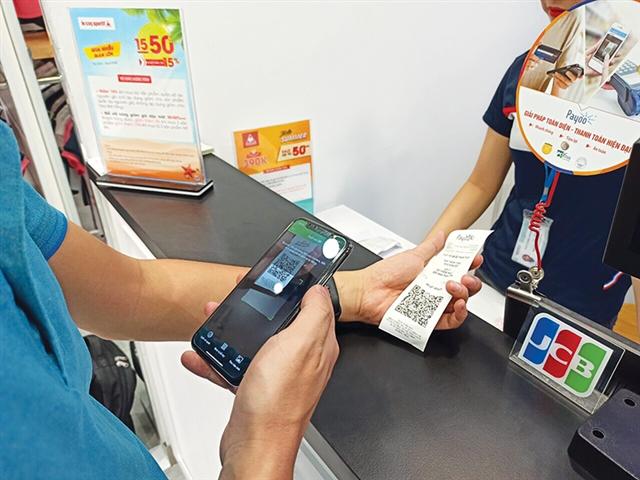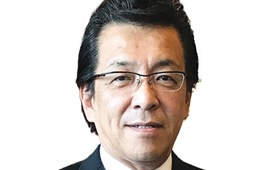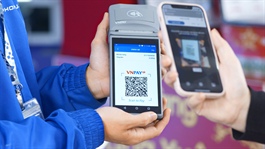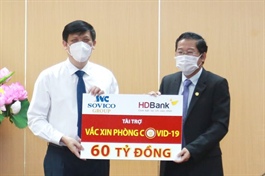E-wallet groups take on losses to get ahead
E-wallet groups take on losses to get ahead
Despite offering more payment options and benefits like promotions to customers – which make e-wallets an attractive alternative to traditional payment methods – many of the present players are facing heavy losses in Vietnam.

Many e-wallet groups are teaming up with other platforms in order to reach more customers
|
With more than 40 e-wallets, the market in this country has become a crowded one in the last few years. Meanwhile, China with its much larger market scale is dominated by the two main providers, Alibaba’s AliPay and Tencent’s WeChat Pay.
In the race for market share, many Vietnamese e-wallets have chosen to partner with e-commerce platforms to increase the rate of returning users as well as customer loyalty.
However, no single e-wallet has been able to completely dominate the market. Instead, about 90 per cent of e-wallet transactions are processed through the platforms of MoMo, ZaloPay, and Moca, according to a report by Q&Me Vietnam Market Research.
MoMo is the most used e-wallet with 20 million individual users by the end of 2020 but does not own any community or ecosystem. Although Zalo has more than 60 million users, ZaloPay has not won over the hearts of its community. Similarly, Indian payment gateway provider AirPay is failed to dominate the market despite its close cooperation with platforms like Shopee – the largest e-commerce site in Vietnam today.
Meanwhile, ride-hailing apps have been partnering with e-wallet providers such as Be with MoMo and SmartPay, Gojek with WePay, and Grab with Moca.
As none of the services shines through unique selling propositions, e-wallet services are forced to constantly offer promotions and introduce attractive services and utilities to retain customers, which is the reason why many of them have incurred losses in the last few years.
Currently, MoMo and ZaloPay spend the most money on marketing and promotion activities, seemingly without any fear of big losses. Despite being among the most popular e-wallets in Vietnam, with its user numbers increasing four-fold since the end of last year, ZaloPay recorded a loss of $9 million, according to the company’s consolidated financial statements for Q1 of 2021.
MoMo also reported a loss of around $37 million in 2019, while Moca also accumulated losses of more than $8.6 million.
The second unicorn in Vietnam, e-payment provider VNPAY, is also expected to have a hard time because of its constant promotional offers. However, the company has achieved close-knit partnerships with 40 banks and more than 20,000 enterprises, showcasing promising development.
While some of these services are seemingly burning money to stay ahead, others can profit from their partnerships with e-commerce platforms. AirPay, thanks to cooperation with Shopee, has made profits for several consecutive years. In 2019, this e-wallet provider reported a profit of $1.2 million.
VietUnion, the owner of the Payoo e-wallet, has also erased accumulated losses from 2018 due to targeting corporate customers and becoming a payment intermediary connecting bill service providers for electricity, water, and school tuition. Profit after tax at Payoo increased from $2.6 million in 2018 to $5 million in 2019.
MoMo vice chairman Nguyen Ba Diep said, “No-one is actually foolish enough to burn money, but innovation investments take a lot of time to achieve the targeted scale.”
Before reaching the desired scale and profits, e-wallets decide to accept large expenditures in the early stages to bring customers over to their platforms. To not invest in marketing would mean to drastically reduce costs and improve profits right away but could also negatively affect market share.
To solve this problem, many providers have chosen one of two solutions: take advantage of the growth of e-commerce in the context of the pandemic, or conduct mergers and acquisitions with foreign businesses with strong financial potential.
In 2019, Lazada officially integrated the eMonkey payment method into their e-commerce business. Shopee also applied many attractive promotional policies for users when making payments via AirPay wallet, while Sendo offers similar promotions for SenPay wallet and Tiki cooperates with MoMo.
In 2020, MoMo promoted the merchant solution with dozens of big brands, and in return for its user base, the brand will offer promotions including discount cards and gifts.
ZaloPay also promoted cooperation with 269 new partners in the past year, in addition to strategic partners such as Lazada, Baemin, Tiki, Sendo, and Circle K.
Moca has sold its shares to Grab, while AirPay sold 30 per cent of shares to Sea Ltd., which has WeChat operator Tencent as a major shareholder. Standard Chartered Private Equity, Goldman Sachs, and Warburg Pincus hold most of MoMo’s charter capital, while Thailand’s True Money owns 90 per cent of 1Pay.
VNLIFE, the parent company of VNPAY, was reported to secure $200 million in its next fundraising round taking place next month. Previously, the company received an investment totalling $300 million from Japan-based Softbank Vision Fund and Singaporean sovereign wealth fund GIC.
According to Nguyen Hoa Binh, chairman of Nexttech Group, the e-wallet market is beginning to see refinement. The similar e-wallets and fintechs will have to find new directions and build so-called super apps.
“I think that 80 per cent of e-wallets will disappear within the next five years. The market will only have about five wallets with different products that generate high usage rates,” Binh commented.
























